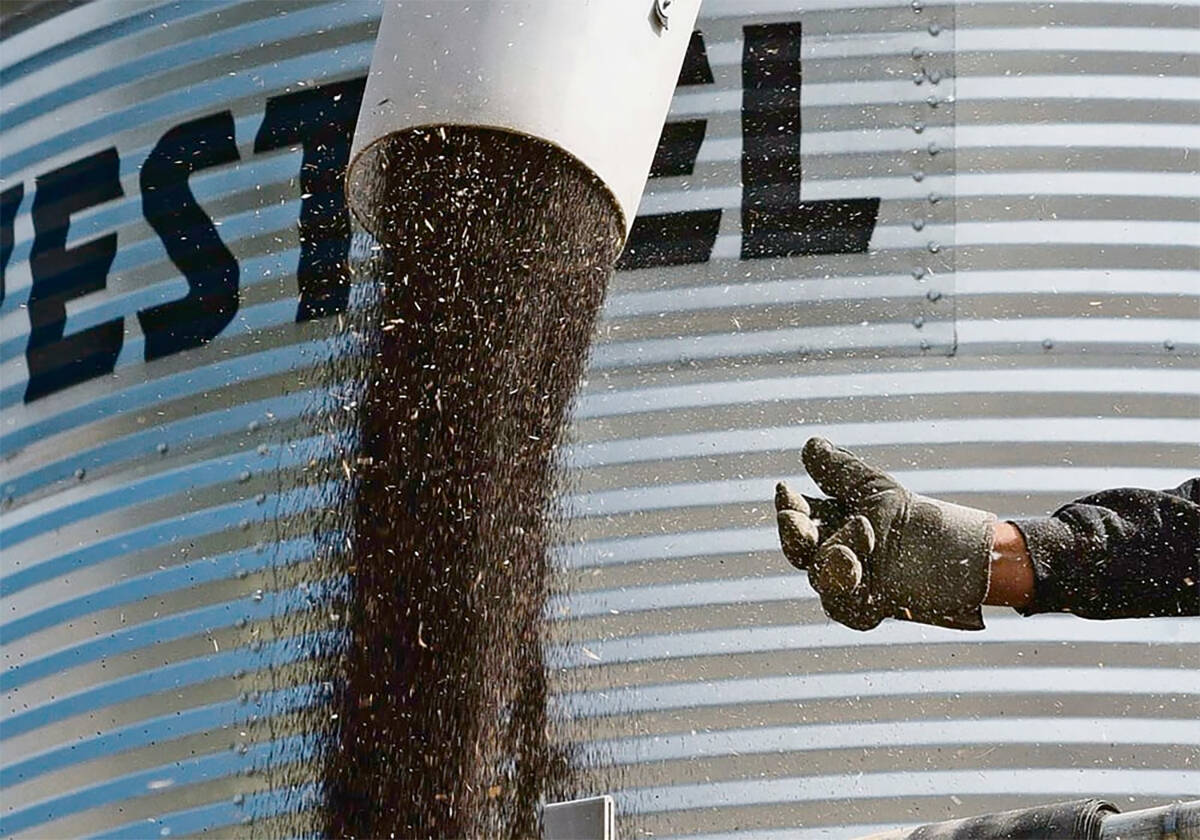WINNIPEG (Reuters) — Canadian farmers are plowing profits from bumper crops into fertilizer storage facilities to mitigate the pricing power held by major retailers and producers.
Having their own storage allows farmers to buy nutrients more cheaply during the off-season and creates fewer transport bottlenecks in the spring planting season.
The practice might eventually erode the steep premiums farmers pay in spring to retail businesses owned by Agrium Inc., Richardson International and Cargill Ltd., while shifting distribution patterns of PotashCorp, Mosaic and CF Industries.
The trend is part of a wider shift by North American farmers to gain more control over costs and the prices they collect. In the U.S. farmers are building silos and bins to store grains and oilseeds until crop handlers entice them to sell.
Read Also

Farmers urged to be grain-safe this fall
Working around grain bins comes with risk, from farmers falling to drowning in grain: Experts have five tips to help avoid grain-related accidents this harvest.
Farmers produced record-large harvests of wheat and canola in 2013, boosting their net income to $6.4 billion, the fourth straight year of gains, according to the most recent Statistics Canada data.
Saskatchewan farmer Kevin Hruska spent $400,000 in 2010 to build storage for about 6,000 tonnes of blended fertilizer. He made the move after diammonium phosphate prices spiked in 2008 to $1,200 per tonne, compared with less than $500 a tonne today.
“We want to store it all. We don’t want to be held hostage by the logistics of springtime and the games the fertilizer companies play,” said Hruska, who grows wheat and canola and uses 6,500 tonnes of fertilizer a year on his 45,000 acre farm.
“It gives you a lot of security knowing your fertilizer is in place out of season.”
The difference between harvest and spring fertilizer prices has been almost enough for farmers to pay the cost of storage within one season, said Lyndon Carlson, senior vice-president of marketing at Farm Credit Canada.
Fertilizer prices have been higher in April than in the previous October eight times in the last decade, according to a provincial government survey of Alberta prices.
For example, the price of urea was $529 per tonne in October 2013 and $721 six months later.
Sales of epoxy-lined bins, which are designed to withstand fertilizer’s corrosiveness, have climbed 20 percent since 2010 at Westeel, said president Andre Granger.
Farmers in North and South Dakota are also building storage for fertilizer, but the trend has not caught on with much smaller U.S. Midwest grain farms. Farmers there lack the same scale to buy storage facilities or fertilizer spreading equipment and rely on local co-operatives to do the work, said Peter Trebuschnoj, Iowa-based director of U.S. operations at bin manufacturer Meridian Manufacturing.
U.S. hog farmers are avoiding high retail prices for spring fertilizer by cashing in on their endless supply of free manure.
Iowa grain farmer Chuck Souder said the ability to produce and store excess fertilizer was a deciding factor when his family built a hog barn last fall that can hold 2,500 animals at a time. He estimates the hogs will produce at least $37,000 in fertilizer a year.
Bumper crops and the strength of multi-generational farms have allowed some farmers to pay cash for storage, while others borrow, said Randy James, manager of agriculture in Manitoba for Bank of Montreal.
The growing size of farms also makes building storage affordable. In Saskatchewan, the average farm is 1,668 acres, five times the average in Iowa.
The benefits go beyond dollars and cents. The farm input distribution system often becomes congested during spring, with fertilizer in high demand during the narrow planting window. For that reason, the move to build fertilizer storage and buy off-season is positive for retail sellers, even though they might sell less product at premium spring prices.
The more fertilizer farmers store, the more price risk they take.
In 2009, retail dealers incurred heavy losses on inventories when prices collapsed.














